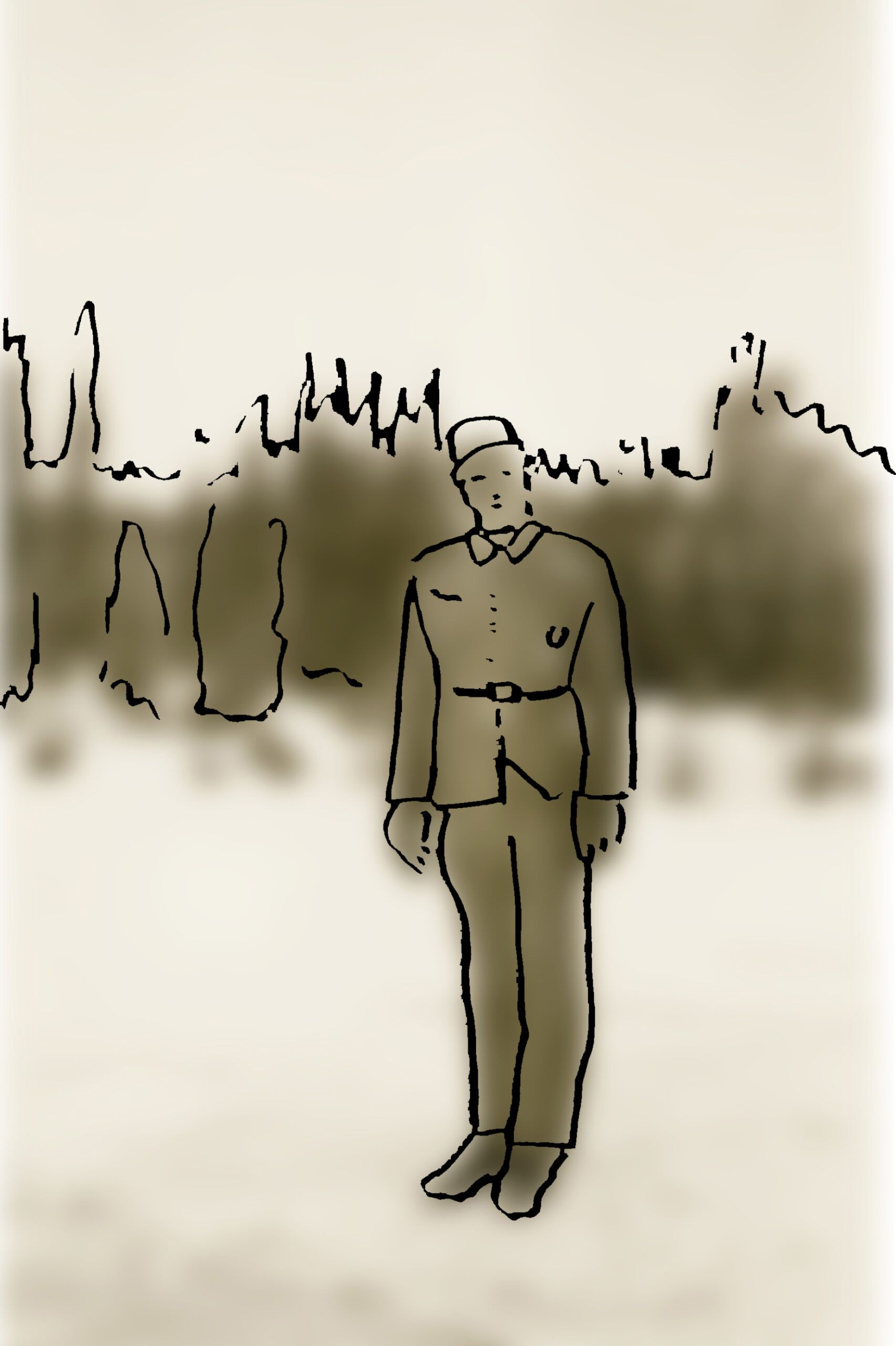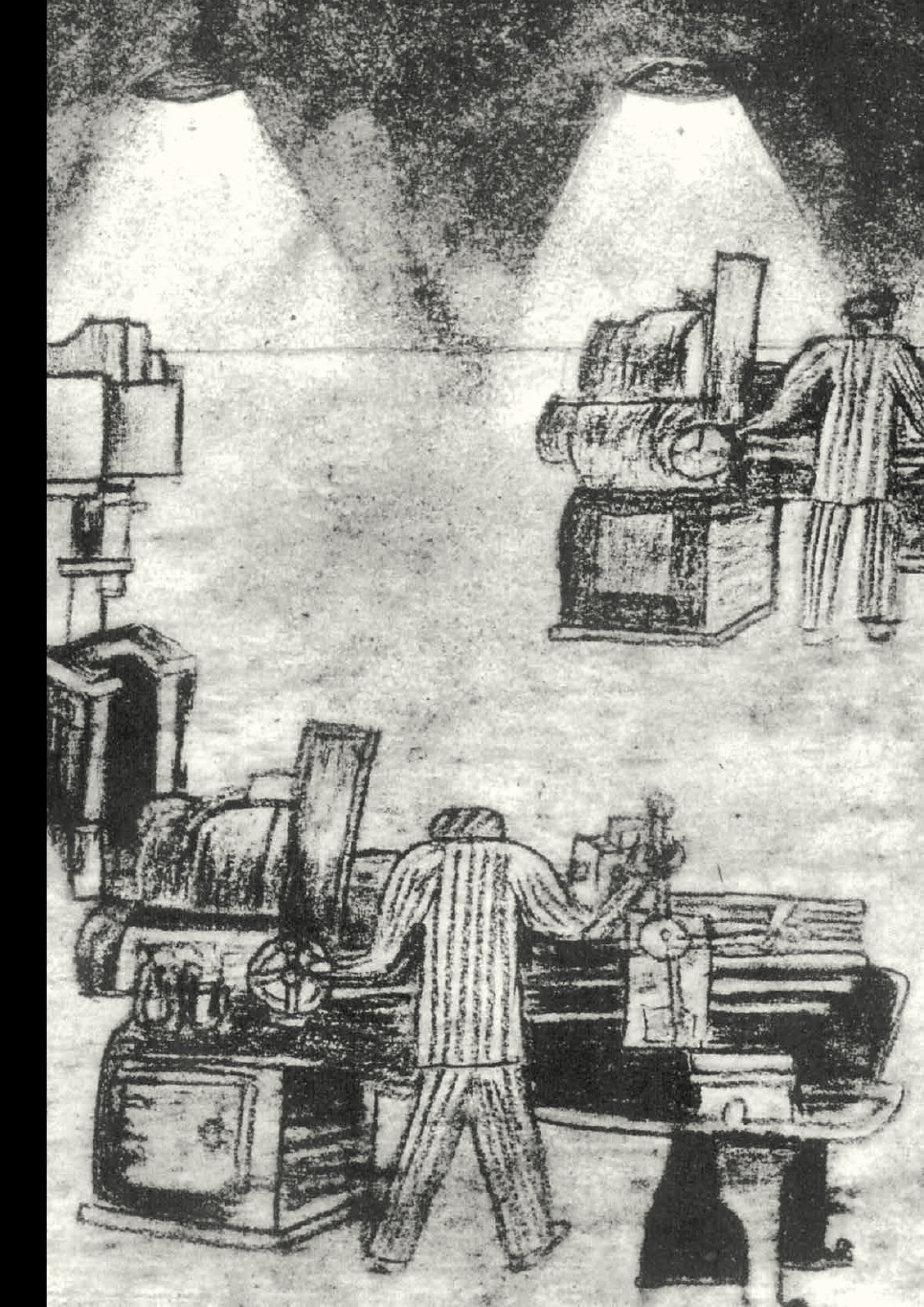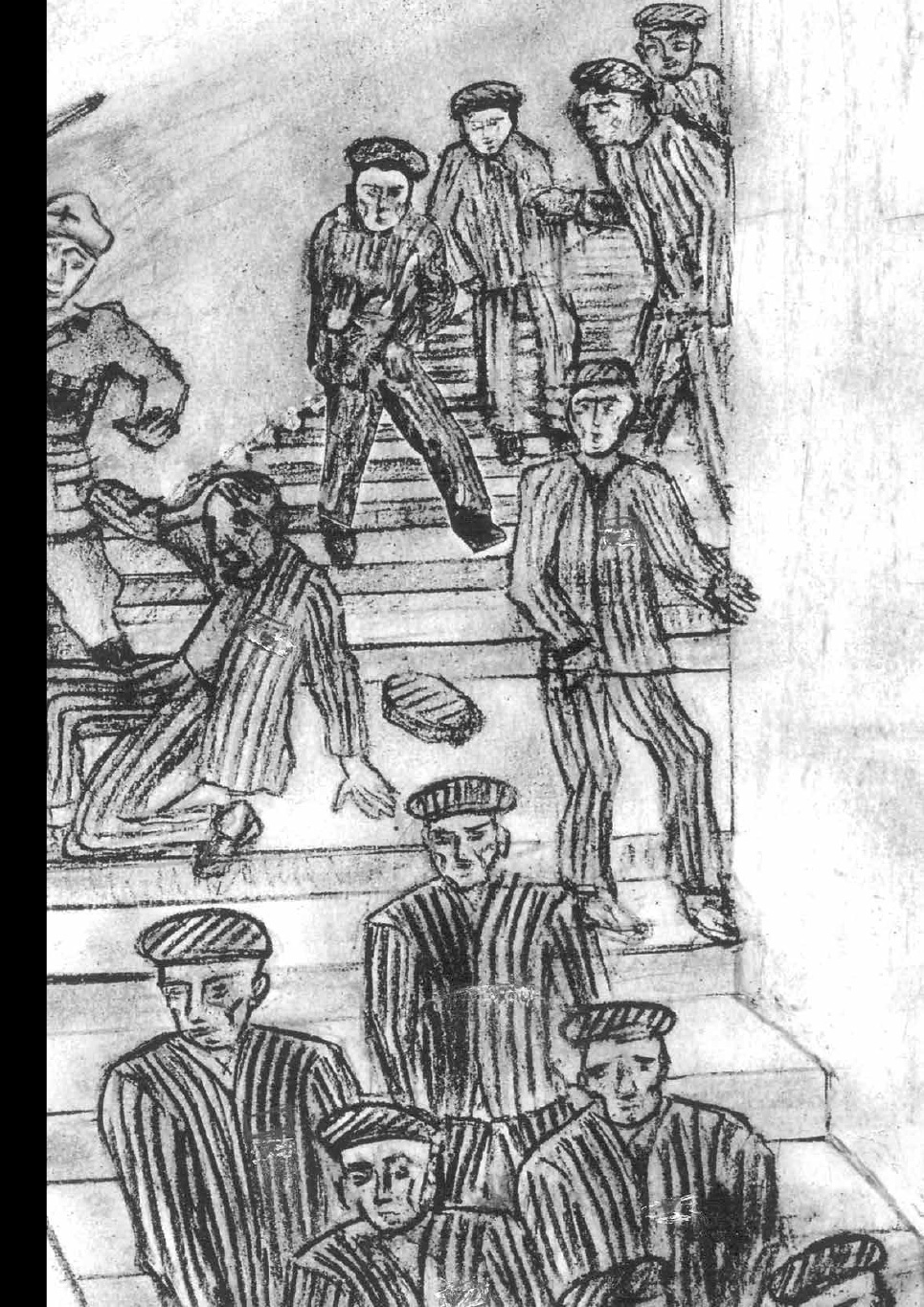> Adlerwerke Historical Site (Foyer)
> A crime that became a part of everyday life
> Zwangsarbeit – ein Verbrechen mitten im Alltag
> The forced labour system
> System Zwangsarbeit
> The concentration camp in the factory
> Das Konzentrationslager in der Fabrik
> Clearance and death march
> Räumung und Todesmarsch
> Conflicts over labour, remembrance, compensation
> Konflikte um Arbeit, Erinnerung, Entschädigung
The concentration camp
in the factory

In the summer of 1944, a concentration camp was set up in the Frankfurt Adlerwerke. Its code name was “Katzbach”. It was one of more than 50 subcamps in the Natzweiler-Struthof concentration camp complex.
1,616 men were confined in the Katzbach concentration camp. By the time of the camp’s clearance in late March 1945, 692 of these inmates had lost their lives. The high proportion of victims was unusual for a factory concentration camp. Camps of this kind were supposed to provide manpower for the factory. Katzbach, however, was a place where the inmates’ lives were constantly in danger.
The inmates
The inmates
Die Häftlinge
The first 200 inmates came to Frankfurt on 22 August 1944 as a “construction crew”. They had been taken prisoner during the Warsaw Uprising. From the Pruszków transit camp in Poland they were transported to the Buchenwald concentration camp. From there the SS sent them to the Adlerwerke.
On 29 September 1944, 1,000 Polish men arrived in Frankfurt from the Dachau concentration camp. They had likewise initially been held in the Pruszków camp. Two further transports from Buchenwald arrived on 26 January and 1 February 1945. The number of concentration camp inmates requested by the Adlerwerke management had thus once again been reached. Apart from these four transports, there were also transferals of smaller inmate groups.
The last transport took place on 1 February 1945 and brought inmates from eleven different countries. Many of them had previously been in custody in various camps and prisons in the East. The grounds for their persecution differed widely. The majority of them were former civilian forced labourers and prisoners of war who had been committed to the concentration camp system by regional Gestapo offices for various “offences”.
The SS camp administration
The SS camp administration
Die SS-Lagerverwaltung
Initially the Katzbach concentration camp guard detail consisted of an SS camp commandant, 2 non-commissioned officers, and 11 guards. Later a total of some 35 men were responsible for guarding the concentration camp inmates. Nearly all of them had been stationed at the front before their concentration camp service. Only few members of the camp administration and the guard details had previous experience with concentration camp service. Many had been assigned to camp service by the Luftwaffe (German air force) in the summer of 1944. Several belonged to the “ethnic German SS volunteers”. They came from Romania and Lithuania.
The camp command
The camp command
Die Lagerführung
The camp commandant SS Hauptscharführer Erich Franz (1914–1985) was the highest-ranking SS functionary in the camp. He was in charge of the camp administration. He also took care of assigning the workers in keeping with the employers’ wishes and ordering disciplinary measures for inmates. He had only very little contact to the inmates.
SS Oberscharführer Emil Lendzian (1902–1956) was the deputy camp commandant and “report officer” (Rapportführer). He was greatly feared by the inmates. Lendzian demanded that they immediately stand at attention when he appeared and beat them at every opportunity. The guards were also afraid of him. He was responsible for the roll calls and assembling the work crews. He decided on the duties of the guards and inmate functionaries. During his frequent inspections of the infirmary he terrorized the inmates, accusing them of merely pretending to be ill.
Martin Weiss (1916–1995) oversaw the kitchen. He procured the food supplies and supervised the inmate cooks at their work. He was responsible for keeping a large proportion of the food from ever reaching the inmates. Weiss was often violent. He was responsible for shooting two escapees to death.

Erich Franz, 1944
Wiener Stadt- und Landesarchiv,
Landesgericht für Strafsachen, A11:5949/1964
The guard units
The guard units
Die Wachmannschaft
The SS guards worked in twelve-hour day and night shifts. Crews of three to four SS men accompanied groups of between 20 and 80 inmates to their workplaces. There they turned them over to the civilian employers. At the end of the inmates’ work shift they accompanied them back to the camp. While the inmates were working, the SS guards remained nearby, guarding the doors and the overall situation. Others guarded the inmates in the camp. The SS guards also watched over transports leaving the camp.
The guards had their living quarters in the same section of the factory building as the inmates. Whereas the two camp commandants had single rooms on the third floor, the guards stayed in multi-bed rooms on the fourth floor in the direct vicinity of the inmates’ dormitory.

SS Unterscharführer Artur Malzkeit
Hessisches Hauptstaatsarchiv Wiesbaden,
544, Ordner 130, L‑M (unregistered)
The Adlerwerke
The Adlerwerke
Die Adlerwerke
It was in the spring of 1944 that the Adlerwerke company management began complaining to the armament authorities about the lack of manpower. Due to this shortage, the company was unable to fulfil the state’s armaments orders. Concentration camp inmates were sent in to work in the production of traction vehicles for the Wehrmacht. The first group, a “construction crew”, arrived in August 1944 and set up the concentration camp in the factory building. The SS and an auxiliary guard unit made up of 20 to 30 factory employees together oversaw the inmates. The auxiliary guards wore white armbands, and some were armed. A number of them were extremely violent and enjoyed their new position of power. Others were restrained and tried to help the concentration camp inmates. Some intervened in their colleagues’ violent acts.
Viktor Heitlinger was the Adlerwerke’s “labour deployment engineer”. In September 1944 he selected 1,000 inmates for the Adlerwerke in the Dachau concentration camp. After their arrival in Frankfurt the company complained to the concentration camp administration: The men were sick and not fit for work.
The company management was in regular contact with the Natzweiler-Struthof concentration camp administration. Dr Franz Engelmann, the Adlerwerke’s defence officer, cooperated with the Frankfurt Gestapo. He kept watch over the company employees, who were not to engage in any form of contact with the concentration camp inmates.
The company management had no interest in the inmates’ health. The living quarters in the camp were confined, the hygienic conditions poor, the heating insufficient. There was too little to eat and a lack of sanitary facilities.





